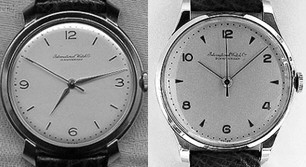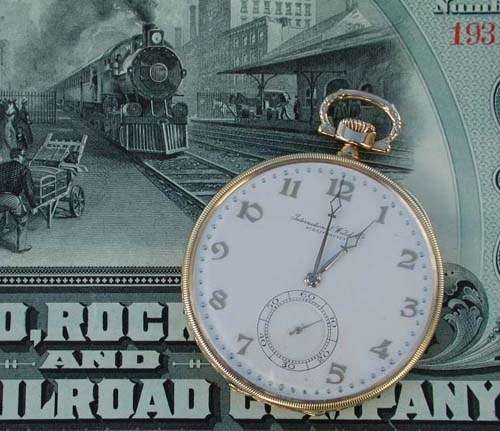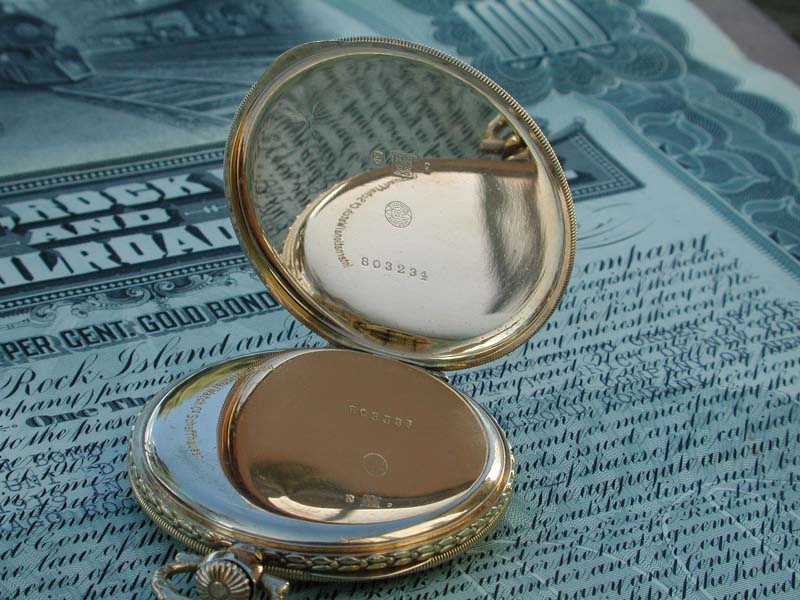

My other IWC's have baton markers, so I wanted some variety among my
watch dials. And although my IWC Mark XI has a calibre 89 movment I was
looking for a dress watch. I knew what I was looking for, all I had to
do was find it.
The funds had been put aside for the purchase while I spent time looking in the vintage watch retailers, with more than the occasional look on the Timezone Sales Corner and eBay. There were some in stainless steel, some in gold with original dials with a variety of lugs and some had boxes but invariably the cost was more than I was prepared to pay. I knew I would have to be patient, which is almost impossible when trying to buy a watch.
On a recent round of the vintage watch retailers and a few antique stores, I found a estate jewellery store which happened to have an beautiful IWC pocket watch. Even though I collect IWC wristwatches I decided to buy it.

The pocket watch is an IWC calibre 73, and the movement number indicates it was manufactured in 1921.
The calibre 73 lepine movement (crown at 12 o'clock) was produced from 1914 through to 1930 with a little over 51,000 movements produced. The movement is 17 ligne in diameter and very thin at only 4mm in height. The related calibre 74 (in Hunter style with the crown at 3 o'clock) was not only used in pocket watches but also in the original Portugieser wristwatches.
The case is 49.8mm in diameter and 9.8mm in height from the back to the top of the convex glass. The 14 carat gold case has applied gold numerals and lance hands with both the case back and the glass opening.

The interior of the case back and the movement both have the "IWC Probus Scafusia" markings, with "International Watch Co Schaffhausen" on the dial and the movement cover. The case back is engine turned and the monogram cartouche has not been engraved.

You can see the index and fine adjustment regulator, in the image below. The calibre 73 also has a Breguet balance spring, 16 jewels and a frequency of 18,000 beats per hour.

I emailed IWC for an excerpt from the ledger and they provided the
following additional information:
The watch left the factory on 4th June, 1924 and the recipient or watch
distributor's name was Stern.
The search for the calibre 89 will resume when I have saved some more funds, but the pocket watch has been an exciting and worthwhile detour.
Greg Steer - April 2001

PS. If you worry about watches not holding their value, the background used for the above photos is Chicago, Rock Island and Pacific Railroad Company 100 Year 4% Gold Bond issued in 1902 and maturing in November 2002. Payment was last made in 1913 and the coupons from 1914 are still attached. The trains may have been on time but the interest payments were not.
PPS. In June 2001 I finally acquired a calibre 89.